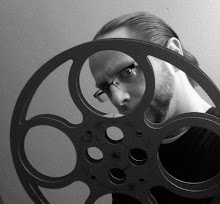Adapting musicals to film is a tricky business. Movies are
all about brevity, and film-fans can often get frustrated having to sit through
a song-and-dance routine before getting to the next plot point. Musicals at
their core are all about the music and the performances, and fans of the stage,
the core-audience of these adaptations, will easily be turned off by having the
source material reduced or cut. There is a balance which needs to be struck,
and that was the massive task in front of director Tom Hooper in his adaptation
of LES MISERABLES, one of the biggest, grandest, and most popular stage
productions of all time.
Jean (Hugh Jackman) is an ex-prisoner who breaks parole
despite being under the watchful eye of ruthless policeman Javert (Russell
Crowe). Jean starts a new successful life and eventually befriends Fantine
(Anne Hathaway), who eventually dies and asks him to care for her daughter
Cosette (Amanda Seyfried), who as a young girl is under the care of her
criminal uncle and aunt (Sacha Baron Cohen and Helena Bonham Carter). Cosette
eventually meets and falls in love with Marius (Eddie Redmayne), who is taking
part in a violent revolution.
Director Tom Hooper clearly understands that movie comes
first in an adaptation. All good films center around character, and that means
emotion. Despite the grand scale and fantastic sets, Hooper never lets us
forget about the characters in LES MIS. He literally pulls the audience out of
the back (and front) rows and right in the faces of the characters; every tear,
twitch, and look in the character’s eyes are right there for us to see and
feel, and that makes the emotion, and consequently, the story of LES MIS flow
naturally with energy and heart.
By making the cast-members sing all of their lines live, the
door is opened for tremendous performances by everyone. There is real acting
and emotion happening on-screen at all times, and it is all summed up in Anne
Hathaway’s performance of “I Dreamed A Dream”. Hathaway’s performance is filmed
in one long take, with no edits or cutaways to apply eyedrops. That means
the tears she eventually sheds are real, making this LES MIS not only the most
realistic stage adaptation, but perhaps the most realistic movie ever filmed.
This is raw emotion on film with enough power to bring the tears out of anyone.
The songs do very well in moving the plot forward, although
some of them chug on for what seems like forever; by the third verse you may
already get the point. It often feels like the film could have used some
cutting here and there, as just when you think the film is heading out the exit
door, no less than four more numbers come along. However, it is all a means to
an end, and those hearty enough to soak it all in will be handsomely rewarded
by film’s end.
Again, performances are outstanding all around…with Jackman
and Hathaway being the standouts. Russell Crowe appears to have a bit of a
limited range, but he seems to accomplish what is asked of him. The show is
nearly stolen by the younger performers (under the age of 10), and by Samantha
Banks, who is the only cast-member of LES MIS to have performed in the stage
production.
People who are not fans of musicals on film may not be converted
over with this LES MIS, as there is a lot of singing and only a handful of
spoken words throughout. Fans of the stage may be turned off by the immediacy
of the film, but should be happy over the honesty of the performances, and
thrilled at the fact that they are out of their seats and practically on stage
standing right next to the performers. Movie-fans have a lot to enjoy as well,
because LES MIS puts character and story first, and that’s something everyone
can relate to.
BOTTOM LINE: See it



























